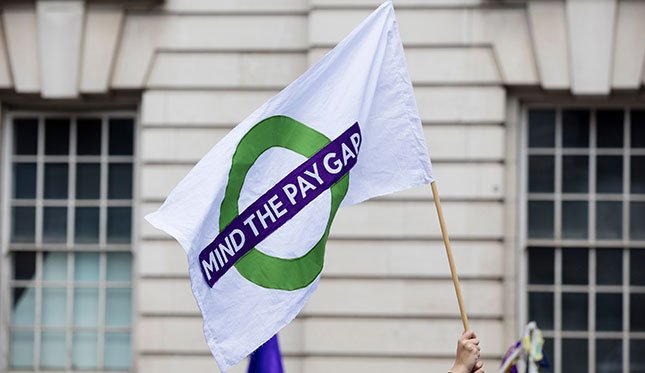The persistence of a gender pay gap throughout all industries, but particularly in finance, isn’t exactly news, especially to women. Even when companies such as State Street genuinely believe in the importance of gender equality, they often still struggle to achieve it internally. And more often than not, at least at major financial firms, the pay gap can’t be attributed to a few aging misogynists, although they certainly exist. Economic research increasingly indicates it may have more to do with structural problems built into the operations of the financial industry.
Claudia Goldin, the Henry Lee Professor of Economics at Harvard and the world’s leading researcher on the gender pay gap, pins the blame for a lack of women at the highest levels of the financial industry, and the pervasive pay gap, in part on the way family leave is handled at most firms.

Certain factors within the way the financial industry works may punish women for taking family leave when they have children, according to Goldin. “Women disproportionately take these leaves,” she says. And while many companies tend to have “very good policies, the policies generally aren’t taken by the men. If the men don’t value these policies, if the policies are expensive, then the men don’t take them and that disadvantages women.”
Moreover, Goldin says, the financial industry tends to be extremely client oriented, which may present an additional hurdle to female employees. “Once clients enter the picture, the demands on the workforce are much more extreme. You have a personal relationship,” she adds. In that sort of environment, the perceived costs of having a minority of employees— i.e., women—absent from maintaining client relationships due to family leave may discourage firms from hiring women in the first place. Ultimately, “if you offer benefits to your workers and only some take them and the others don’t value them, you’re going to be in trouble,” Goldin says.
Under Goldin’s theory, fixing the gender pay gap on Wall Street will require a major change in the way men treat family leave, as well as changes to team structures to create redundancy in client relationships and reduce the perceived cost of leave.

Columbia Business School assistant professor of management Mabel Abraham and Yale School of Management assistant professor of organizational behavior Tristan Botelho present an alternative explanation in a 2017 study in Administrative Science Quarterly. The researchers analyzed an online platform where hedge fund and mutual fund managers share investment recommendations with their peers.
Botelho and Abraham found that although the performance of individual managers is clearly displayed on the platform, “recommendations posted by women received significantly fewer clicks or attention than identical recommendations posted by men,” according to Abraham. Indeed, men with more stereotypically female sounding names, such as Kelly, also received fewer clicks. In other words, fund managers were filtering based on gender without even realizing it. Yet users consistently said all they cared about was performance.
“If I’m looking at a list,” Abraham says, “we’re still accustomed to there being male names in a male-dominated industry, and we use that as a first pass when we sort through.”
It’s not hard to imagine the same subconscious sorting mechanism at work in hiring, compensation and promotion decisions. “When we think about structuring things like hiring processes, you want tons of applications, and more applicants is better,” Abraham says. But “our findings are telling us that sorting process may lead to an overrepresentation of men.”
Solving this sort of subconscious bias is difficult, particularly as there is no single villain responsible for blocking the advancement of women. Abraham and Botelho did find, however, that when the number of recommendations to choose from was reduced from a high number—such as 150—to a more manageable number—such as 15—the bias against female recommendations disappeared.
Still, there may not be a silver bullet. “Imagine an ideal situation where an organization is setting the policy up [to promote gender diversity], making some claims, trying to take some actions, but those actions are incomplete in thinking about how bias might creep in,” Abraham says. “You might still see some bias. Even the best-laid intentions can fall flat if we haven’t thought about some of the subtler ways bias can creep in.”










